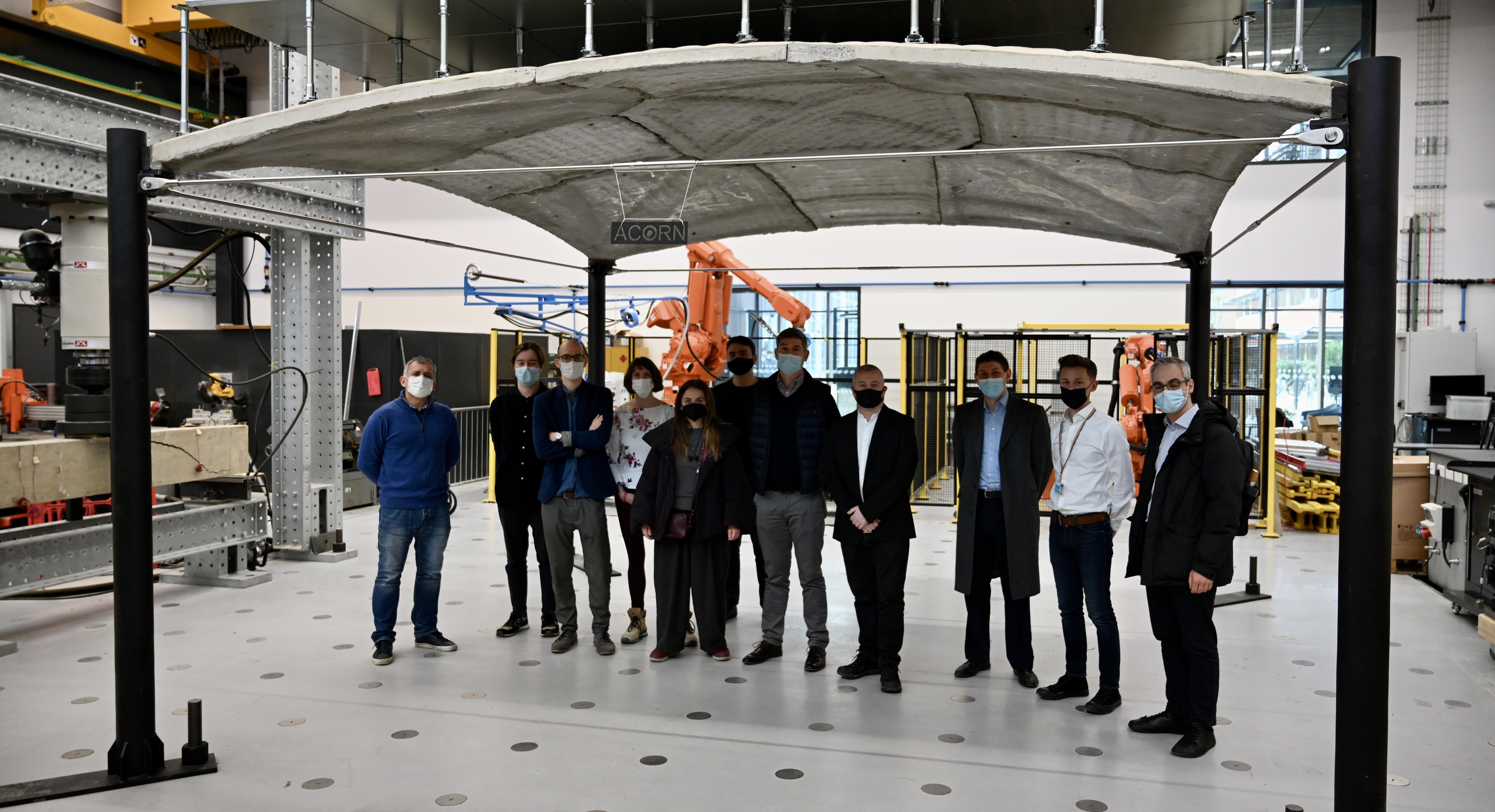
Submitted by L. Millard on Thu, 24/02/2022 - 11:21
The CSIC-supported project Automating Concrete Construction (ACORN), which aims to change the way concrete is used in buildings to decarbonise construction, features in the RIBA Journal, published by the Royal Institute of British Architects, in an article titled ‘Thin vaulted floor slab could slash embodied carbon by 60%’.
ACORN, which is a collaboration across the Universities of Bath, Cambridge and Dundee, and also includes a growing number of industry partners, is helping to decarbonise construction by rethinking the way that concrete is used in buildings. The project is driving a new industry culture to improve whole-life sustainability and productivity and aims to deliver against the Construction 2025 objectives by eliminating waste and reducing carbon emissions associated with traditional use of concrete in construction.
The success of the ACORN project makes clear the importance of reconsidering how we use concrete – by developing novel automation techniques for fabrication that inform the design process, we demonstrate the significant low hanging fruit that exist for construction to dramatically cut carbon emissions by reducing demand for cement consumption. Our collaborations across computing, structural engineering, optimisation, and robotics have been vital to this progress Dr John Orr, ACORN lead at University of Cambridge, CSIC Investigator and University Lecturer in Concrete Structures
Dr Paul Shepherd, ACORN Principal Investigator at the University of Bath, said, “This three-year project formally comes to an end next month. We have carried out some really exciting research, culminating in the manufacture and construction of a full-sized demonstration building in Cambridge’s National Research Facility for Infrastructure Sensing (NRFIS) laboratory, for which our CSIC-funded researcher has calculated savings of 60% in embodied carbon compared to a traditional flat-slab equivalent. Along with our 27 industry supporters, the team is now eagerly awaiting the results of our application for follow-on funding, so that we can drive these innovations towards large-scale industry adoption.”
The robot-manufactured new vaulted style of floor uses 75% less concrete than a traditional slab floor that features in the RIBA Journal in an article that describes the engineering behind the project and the possibility that ACORN’s approach “could be the secret to unlocking net zero buildings”.
“The success of the ACORN project makes clear the importance of reconsidering how we use concrete – by developing novel automation techniques for fabrication that inform the design process, we demonstrate the significant low hanging fruit that exist for construction to dramatically cut carbon emissions by reducing demand for cement consumption. Our collaborations across computing, structural engineering, optimisation, and robotics have been vital to this progress,” said Dr John Orr, CSIC Investigator and University Lecturer in Concrete Structures, who leads the ACORN project at the University of Cambridge.
In rethinking the way concrete is used in buildings, ACORN combines offsite manufacturing processes, affordable robotics and a highly-automated, quality-controlled environment to help design concrete out of construction – only using concrete where it is needed. The traditional approach to pre-casting prism-shaped concrete slabs has not changed since Roman times and while this method offers highly repeatable results it creates waste and is not carbon efficient. New approaches to concrete use and manufacture are needed and the value of them evidenced to encourage a change of culture in the construction industry and adoption at scale.
“Achieving the net-zero targets recently ratified at the COP26 conference will require significant change by the construction industry, which is responsible for about half of the UK’s total emissions. Since concrete is the world’s most widely consumed material after water, and its production contributes more than 7% of global CO2 emissions, the easiest way for construction to begin its journey to net-zero is to use less concrete. That has been the driving force behind this project, which we hope could make a major difference to the impact of construction,” said Dr Shepherd.
Transforming Construction
ACORN is also showcased by UKRI’s Transforming Construction Story Catalogue that shines a light on innovations that are changing UK construction.
The ACORN Stronger Story sets out the problem that ACORN aims to overcome: “The production and use of concrete is one of the world’s biggest sources of carbon emissions. Worse, is that up to half the concrete being used in buildings is unnecessary. Concrete is used so often because it can be shaped into easy-to-make beams, columns and floor slabs. But while easy to make, these prisms are inefficient to build with, create waste and are a major driver of embodied carbon in construction.”
Quick links
• Read the RIBA article about ACORN
• Read the Transforming Construction Stronger Story about ACORN
• Read more about ACORN in the CSIC Annual Review
Construction’s ongoing journey to net zero (2021)
Automating Concrete Construction: digital processes for whole-life sustainability and productivity (2019)
• The CSIC Smart Bridges research project also features on the Story Catalogue.
• See the ACORN website at: automated.construction
• Read more about the National Research Facility for Infrastructure Sensing (NRFIS)
